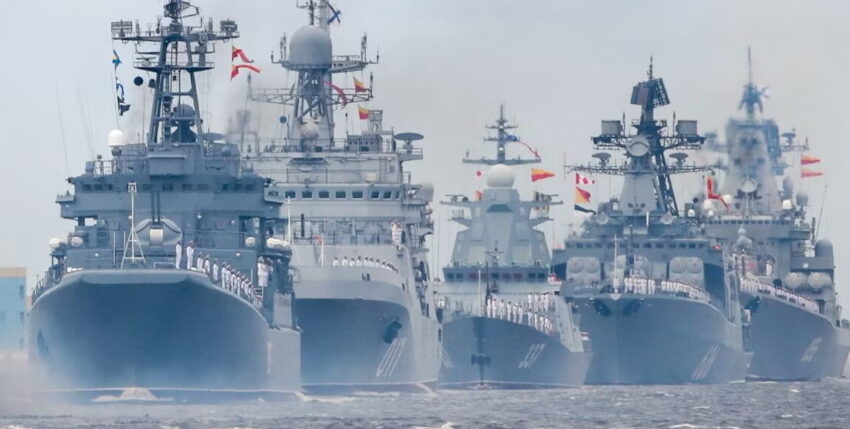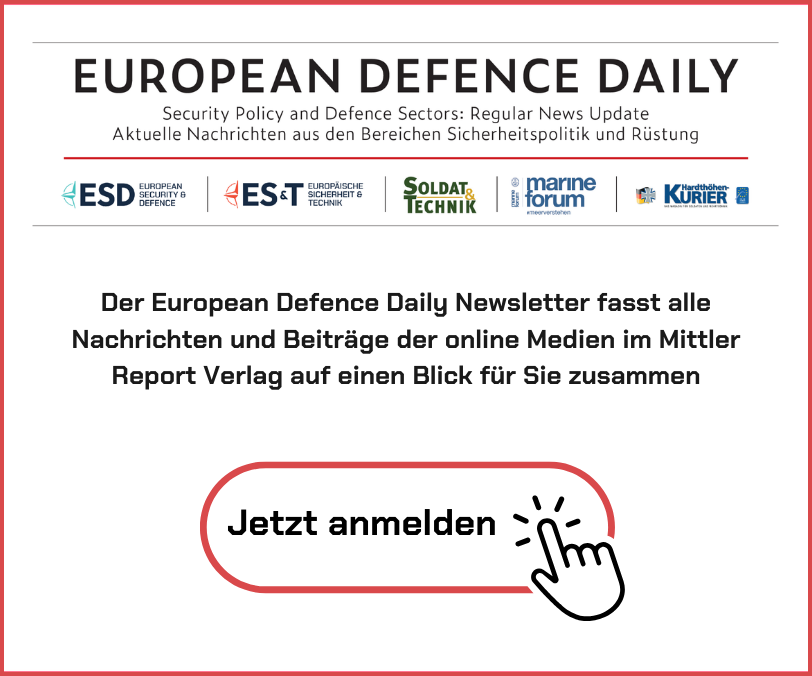On 11 April 2025, Russian President Vladimir Putin announced an extensive investment programme for the navy of the Russian Federation. Around 87 billion euros are to be invested in new ships, submarines and state-of-the-art weapons systems over ten years (until 2035). Measured against overall Western budgets, the sum seems rather modest, but it will have a considerable impact in the specific Russian cost environment and represents a significant investment in the Russian navy.
An attempt at categorisation
Moscow's annual expenditure in the budget chapter "National Defence" in the years 2022 to 2025 is between 4.2 and 5 trillion roubles (Ministry of Finance of the Russian Federation) - corresponding to around 44 to 53 billion euros. Due to additional budgets, extra-budgetary funds and separate war spending, international institutes estimate actual military spending in 2024 at around 13 trillion roubles (around 135 billion euros), which would correspond to 7 per cent of Russia's GDP (IISS, SIPRI).
Purchasing power lever
However, a naked comparison of nominal budgets is not sufficient for categorisation. In order to compare the defence spending of different countries, it is necessary to look at purchasing power parity (PPP). World Bank and IMF indices place the Russian price level in the defence sector at around half of Western procurement costs. Lower wage, energy and steel prices as well as state-controlled shipyards and suppliers mean that one hundred roubles in Russian naval shipbuilding procures significantly more steel, labour hours and system-critical components from warheads to on-board electronics than one euro in Europe (exchange rate 100 to 1 - roughly simplified).
In terms of purchasing power parity the annual Defence spending from the equivalent of 135 billion euros to 370 to 480 billion Euro PPP - this range results from the different PPP approaches of the analysing institutes - see IISS Military Balance 2024 and World Bank PPP data.
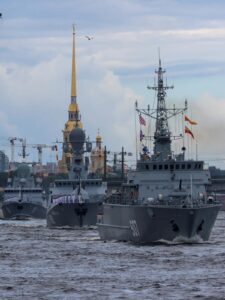
A comparison of defence budgets
The USA estimated around EUR 820 billion (USD 886 billion) for defence in 2024 and around EUR 830 billion (USD 895 billion) in 2025. The EU Member States 326 billion in 2024, according to the European Defence Agency. Defence from. The expenditure of the European NATO countries (excluding Turkey) totalled 446 billion euros in 2024 (NATO). The Chinese defence budget is nominally around EUR 232 billion, or at purchasing power parity in a corridor of EUR 385 to 465 PPP.
Naval share of Russian defence spending
Russian and Western analysts calculate the share for operation, modernisation and new construction of the Marine to 10 to 15 per cent of the Russian defence budget. In terms of total expenditure, this amounts to between 1.3 and 1.9 trillion roubles per year - the equivalent of 14 to 20 billion euros (CAST - Centre for Analyses of Strategies and Technologies, Moscow; IFRI - Institut Français des Relations Internationales, Paris).
It is unclear whether the naval investment of 8.4 trillion roubles (87 billion euros) announced on 11 April for the period 2025 to 2035 will actually increase the regular naval budget, or whether it is just another sum game of already planned expenditure.
If the announced amount is to be counted as a real surcharge, the navy would then have an additional 840 billion roubles (8.7 billion euros) at its disposal each year. Roughly speaking, its budget would increase by 50% of the current budget - adjusted for purchasing power, it could already have an amount of around 70 billion euros PPP at its disposal in 2025. That's all arithmetic - and if it were to happen!
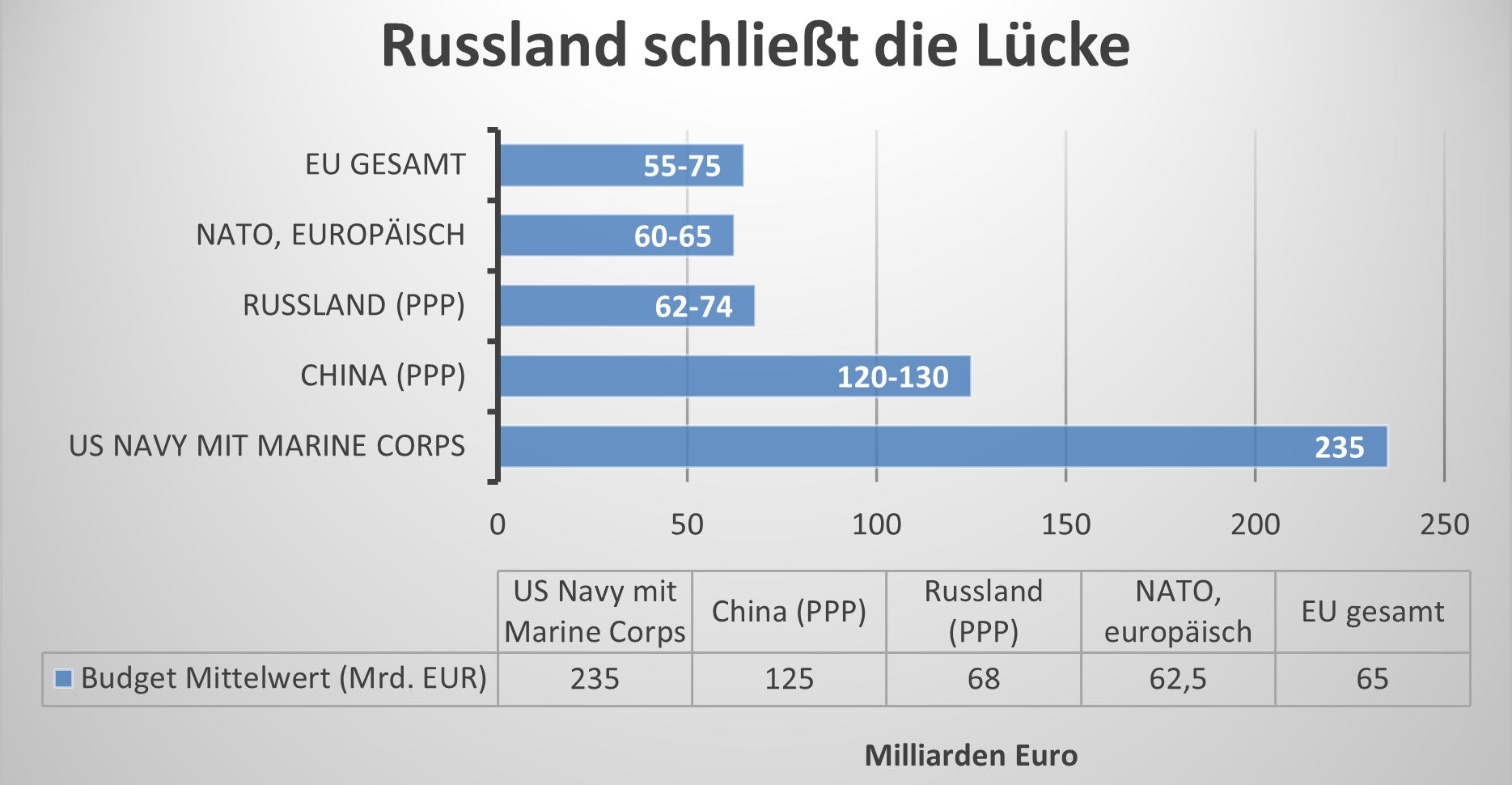
Figures - Naval budgets in comparison
Here are the 2024 fleet budgets of selected Western navies (basis: IISS, Military Balance 2025):
- German Navy (DEU): 8.8 billion euros
- Royal Danish Navy (DNK): 1.0 billion euros
- Armada (ESP): 5.1 billion euros
- Finlands Marinen (FIN): 2.0 billion euros
- Marine Nationale (FRA): 11.2 billion euros
- Πολεμικό Ναυτικό (GRC): 1.75 billion euros
- Marina Militare (ITA): 6.1 billion euros
- Koningklijke Marine (NLD): 1.5 billion euros
- Royal Norwegian Navy (NOR): 1.3 billion euros
- Marinha Portuguesa (PRT): 1.0 billion euros
- Royal Swedish Navy (SWE): 1.6 billion euros
- Royal Navy (GBR): 8.0 billion euros
- US Navy (USA): 186.4 billion euros plus 49.0 billion euros US Marine Corps.
Attempt at categorisation - Europe, Russia, China, USA
The entire Marine expenses of the EU member states in 2024 will total around 55 billion eurosthe European NATO countries (excluding Turkey) to around 65 billion euros. For all European navies Taken together, approx. 75 billion euros applied.
The Russian naval budget is already nominally (14 to 20 billion euros - without equalisation) above every single European navy. Viewed as a whole, the tide is turning: taking into account purchasing power (20 to 40 billion euros), the Russian Navy would only have a higher-value budget at its disposal if the announced surcharge payments are added - by and for 70 billion euros.
To the Budget of the US Navy (190 or 240 billion euros) However, the Russian Federation's navy is nowhere near this level, even in terms of real procurement power.
Thinking outside the box: Even with the supplement, the Russian Navy's budget would be below the Naval share of the defence budget of the People's Republic of China. Adjusted for purchasing power, the PLA-N is between 120 and 130 billion euros per year.
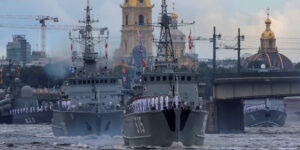
It should be noted that the Military Balance 2025 data from the International Institute for Strategic Studies (IISS) only provides precise naval budgets for some countries. For countries without clearly separated naval budgets, reliable estimates are used to determine the share of the navy in the national defence budget. These shares are usually between 15 and 25 per cent.
Conclusion
The 87 billion euros announced for investment by the Russian Navy by 2035 may not seem excessive by global standards. In any case, the award gives it room for manoeuvre for new buildings and technology products. It can be assumed that Moscow will deploy its funds in a focussed manner and not serve the entire naval armaments sector, but rather invest in fleet components that promise the greatest geopolitical leverage: Submarines, hypersonic weapons and presence in the Arctic.
With the war in Ukraine, the focus has so far been on land warfare - an estimated 70 per cent of the Russian budget currently goes to the army and air defence. In contrast, the navy only receives 12 to 15 per cent of the defence budget following the collapse in importance due to losses in the Black Sea. Putin's "naval offensive" is upgrading the naval forces, which could open up new perspectives for the country at sea and rebuild neglected potential.
If what has been announced materialises.

